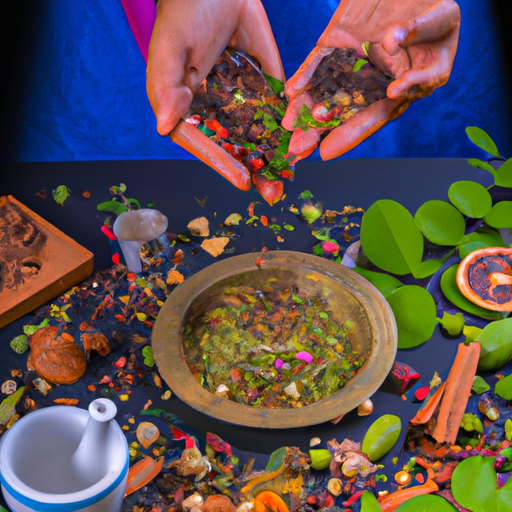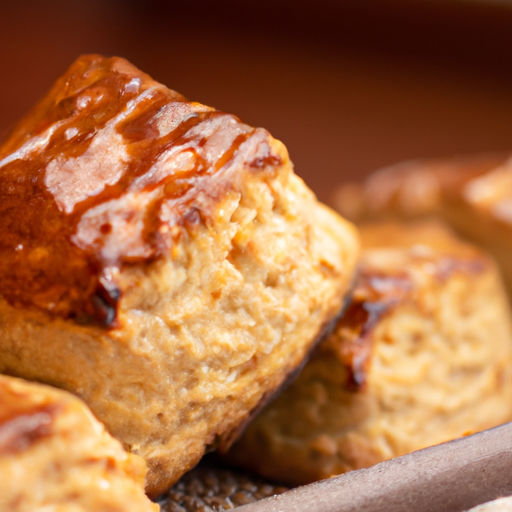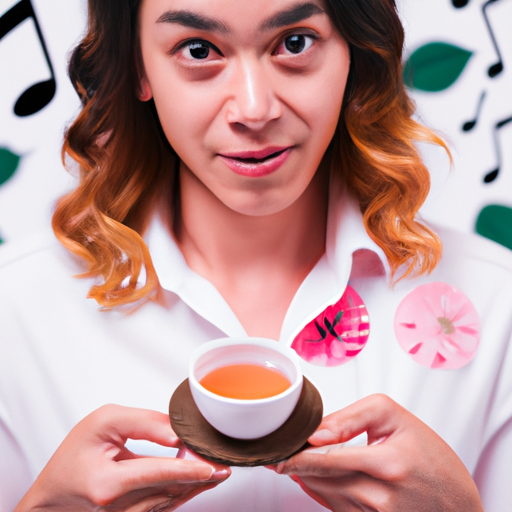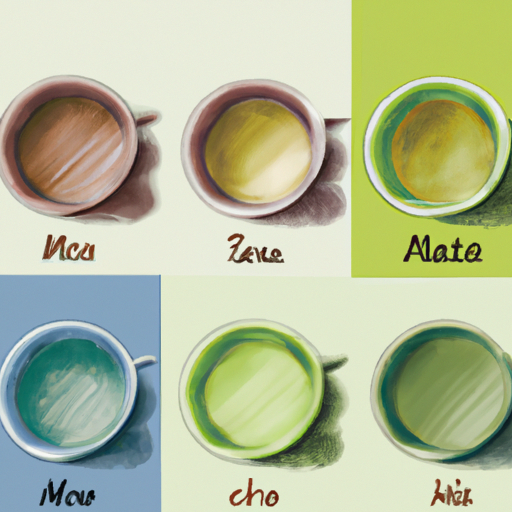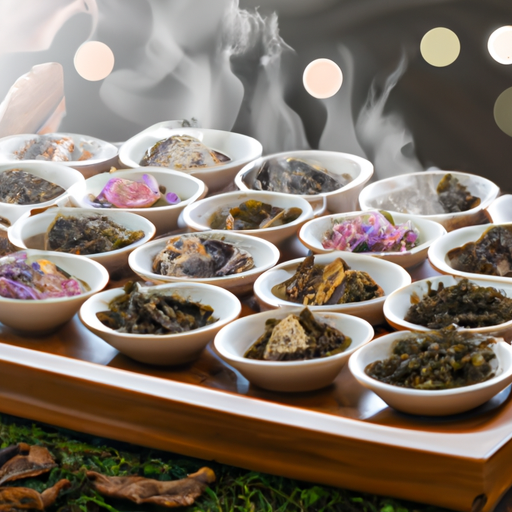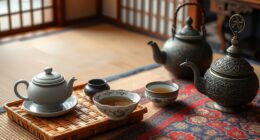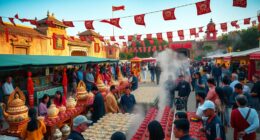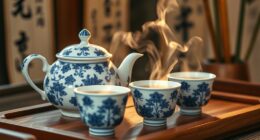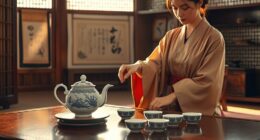Tea blending is more than just a science – it’s an art. It’s a fascinating process that enables you to craft distinctive flavors and explore a world of infinite possibilities. By following a few easy tips, you can begin your own adventure in tea blending and discover a whole new universe of taste experiences.
In the art of tea blending, there are no limits or boundaries. It’s about exploring different combinations, experimenting with flavors, and finding the perfect balance. As a tea enthusiast, I have discovered six invaluable tips that will help you create your own exquisite tea blends.
First, master the blending basics. Understand the characteristics of each tea and ingredient, and how they can complement or enhance one another.
Second, embrace the vast array of ingredients and flavors available, from delicate floral notes to bold spices.
Third, familiarize yourself with the process and techniques, ensuring you extract the maximum flavor from each component.
Join me as we dive into the world of tea blending, where creativity knows no bounds and every cup is a masterpiece. Get ready to embark on a journey of tantalizing aromas, complex flavors, and the pure joy of creating your own signature tea blends.
Key Takeaways
- Tea blending is a creative and enjoyable process that can be done at home.
- Good tea blends should have a balance of base, middle, and top notes to create a harmonious flavor profile.
- Personal taste preferences can be incorporated into tea blends, making it a customizable experience.
- Experimentation and documentation are key in finding the perfect blend and replicating successful ones.
What is it?
Tea blending is the process of combining different teas and ingredients to create unique flavors, allowing me to explore my creativity and experiment with different flavor profiles. The benefits of tea blending are numerous. Not only does it give me the opportunity to explore and discover new and exciting flavors, but it also allows me to customize my tea blends to suit my personal taste preferences.
By blending different teas and ingredients, I can create flavors that aren’t available in pre-packaged teas, giving me a truly unique and one-of-a-kind tea experience. The possibilities are endless when it comes to tea blending, and I love the freedom it gives me to create and explore new and interesting flavor combinations.
Whether I’m looking to create a soothing herbal blend or a bold and robust black tea blend, tea blending allows me to create teas that are tailored to my tastes and preferences.
Blending Basics
Experiment with different combinations of ingredients to find the perfect balance of flavors in your blends. Tea blending offers a multitude of benefits, both in terms of taste and health. By creating your own tea blends, you have the opportunity to customize flavors to suit your preferences and explore unique combinations.
Additionally, tea blending allows you to incorporate ingredients that offer specific health benefits. For example, you can add herbs like chamomile for relaxation or mint for digestion. By carefully selecting and blending ingredients, you can create teas that not only taste delicious but also promote wellness.
Whether you’re looking to create a soothing bedtime blend or a refreshing antioxidant-rich blend, tea blending provides endless possibilities for both flavor exploration and enhancing your overall well-being.
Ingredients and Flavors
When it comes to creating unique tea blends, exploring different ingredients and flavors is key. Here are four tips to help you in your tea blending journey:
-
Flavor Pairing: Experiment with different combinations of ingredients to find complementary flavors. Consider pairing floral teas with fruity ingredients or earthy teas with spicy flavors for a well-rounded blend.
-
Natural vs. Artificial Ingredients: While both natural and artificial ingredients can be used in tea blends, natural ingredients tend to provide a more authentic and nuanced flavor. However, artificial ingredients can offer consistency and convenience.
-
Balance: Achieving a harmonious flavor profile requires a balance of base, middle, and top notes. Experiment with different ingredient quantities to find the right balance and create a well-rounded blend.
-
Taste Test: Regularly taste your blends to assess the aroma and flavor. Take detailed notes to track your preferences and make adjustments as needed. Remember, tea blending is an art, and personal taste preferences play a significant role in creating the perfect blend.
Process and Techniques
To create unique tea blends, I employ various techniques and processes that allow me to explore different flavors and ingredients. When it comes to blending techniques, I focus on achieving a harmonious balance of flavors by carefully selecting the base, middle, and top notes of each tea. This ensures that the flavors complement each other and create a well-rounded blend.
Additionally, I experiment with different flavor combinations to create interesting and complex profiles. Whether it’s combining floral notes with citrusy flavors or adding a hint of spice to a fruity blend, the possibilities are endless. By understanding the characteristics of each ingredient and how they interact, I can create tea blends that are truly one-of-a-kind.
Frequently Asked Questions
How can I determine the caffeine content in my tea blend?
To determine the caffeine content in a tea blend, you can start by researching the caffeine levels of each tea used in the blend. Analyzing the health benefits of different teas can also help estimate their caffeine content.
Are there any specific guidelines for steeping time and temperature when blending teas?
When blending teas, it’s important to consider the steeping time and temperature. Factors such as the type of tea, desired flavor profile, and personal preference play a role. Generally, green teas require lower temperatures and shorter steeping times, while black teas can handle higher temperatures and longer steeping times. It’s best to experiment and adjust based on your taste preferences.
Can I blend different types of tea bases together, such as green tea and black tea?
Tea blending allows for endless possibilities and exciting experimentation. By blending different tea bases, like green tea and black tea, you can create unique flavors and combinations that offer a multitude of benefits. Let your creativity soar!
What are some common flavor combinations that work well in tea blends?
Common flavor combinations in tea blends include lavender and chamomile for a calming blend, ginger and lemon for a refreshing blend, and cinnamon and cardamom for a warming blend. Experiment with different herbs and spices to create unique and delicious tea blends.
How can I ensure that my tea blend is balanced in terms of base, middle, and top notes?
To balance the flavor profile of a tea blend, I select complementary ingredients. Around 80% of the blend is the base note, while the middle and top notes make up the remaining 20%. This creates a harmonious and well-rounded taste experience.

